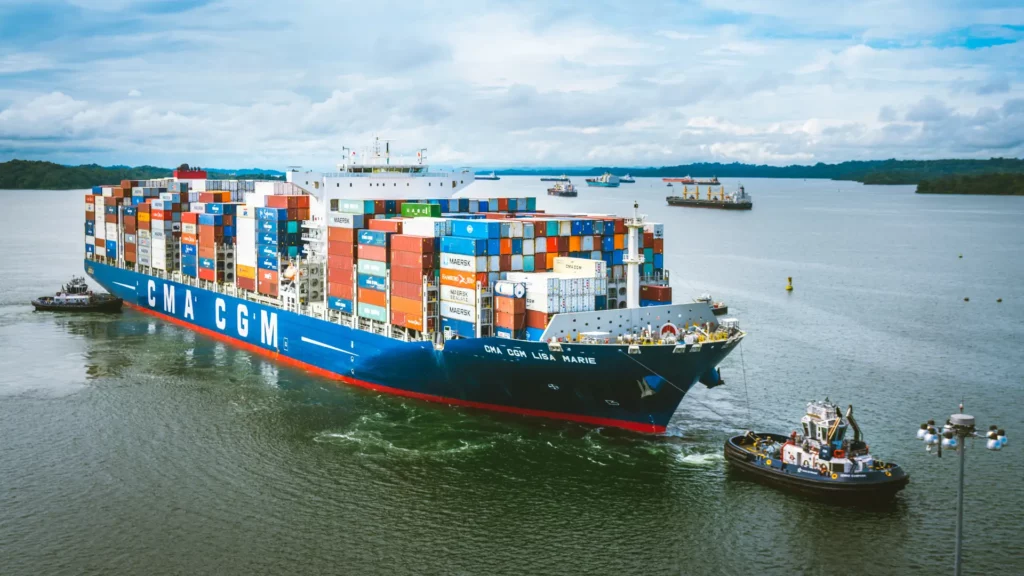Global supply systems are once again under pressure due to the pandemic that disrupted worldwide trade through lockdowns and travel restrictions.
Shippers are dealing with many challenges, such as the Middle East conflict, the Central American drought, and US strike action. As a result, businesses are finding it difficult and more expensive to ship goods.
Why are there pressures on supply chains?
Over the past year, international shippers have faced challenges when moving goods.
The first one on the list is the disruption in the Middle East and its impact on trade across the Red Sea. The main shipping route has seen a two-thirds decrease in traffic since the Houthi rebel attack on vessels started earlier this year. The route covered 12% of all trade worldwide before the attacks.
Many companies, including well-known shipping firms like Maersk, have given up on the route and traveling around the Cape of Good Hope, which will add additional expenses and ten days more to the journey.
There are concerns that more ships may avoid the route due to the current increase in conflicts in the Middle East.
Since most container ships are avoiding the Red Sea, Peter Sand, chief analyst at maritime analytics platform Xeneta, believes the recent escalation will have less impact.
Fewer ships are now passing through the Panama Canal due to a drought that reduced the daily limit from 36 to 20.
Fears of interruption in trade have been even more intense due to the US East Coast port strikes.
Around 14 ports around the US East Coast were affected by the 50,000 International Longshoremen Association members who went on an indefinite strike on Tuesday.
Marco Forgione, director general of the Chartered Institute of Export and International Trade, said that the invasion of Ukraine by Russia, the US-China trade dispute, and incidents like the collapse of the Baltimore bridge have put exceptional pressure on the fragile supply chain.
Due to these incidents, the cost of transporting goods has been impacted.
Businesses using the Cape of Good Hope route have a 40% increase in fuel costs and container prices.
When the market peaked in July, spot rates of 40-ft shipping containers traveling between East Asia and northern Europe were $8,587 per container, 468% more than in December 2023, before the Houthi attacks started.
The US port strikes have impacted container pricing, with the average price of a 40-ft container at $2,861, up from $1,836.
The interruption in the Red Sea led to more waiting periods for the companies.
Manufacturers and merchants claimed that delivery times had increased by four weeks due to the diversion around Africa to avoid the Red Sea.
Due to the disruption, Tesla and Volvo had to shut down production due to a parts shortage.
Retailers in the UK, such as JD Sports and DFS, have a sales decline due to the Red Sea situation.
Forgione predicted that if disruption persisted, consumers would eventually suffer.
How is the price of oil impacted?
On Wednesday, the oil price increased for the second day in a row, from $71 to $76 per barrel.
The market is preparing for a potential danger to Iran’s crude supply. They can produce a million barrels of oil a day. However, if issues with shipping lanes across the Red Sea impact petroleum shipments from the Middle East region, there may be supply disruptions.
In an unlikely event, Goldman Sachs warned that a disruption in the oil flow through the Persian Gulf’s Strait of Hormuz would cause an increase in oil prices.
Will inflation increase again?
In 2021, the price of petrol and oil started increasing, resulting in inflation going up by 10% and impacting the cost of groceries to home energy bills.
Over the past year, inflation has dropped to almost the Bank of England’s 2% objective, but prices are still more than 20% higher than before the pandemic.
The cost of EU imports has increased due to Brexit, and the US and China’s trade dispute might become a bigger tariff war.
The UK is still suffering from the effects of the pandemic and two major wars, which affected importers and exporters. Brits’ finances will suffer if they decide to pass the costs on to customers.
